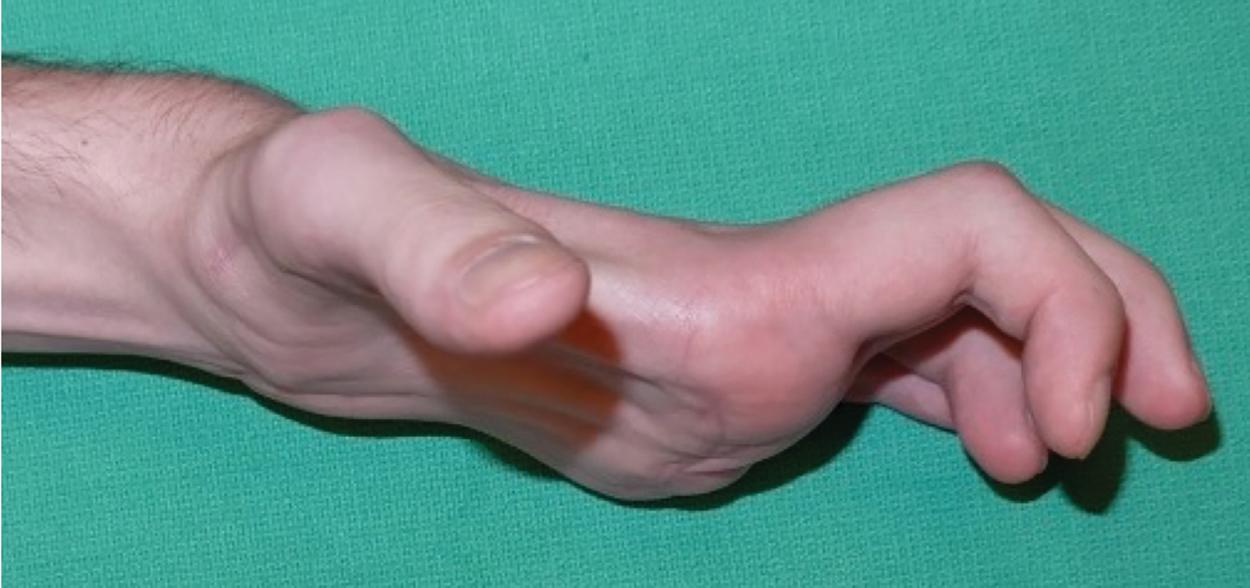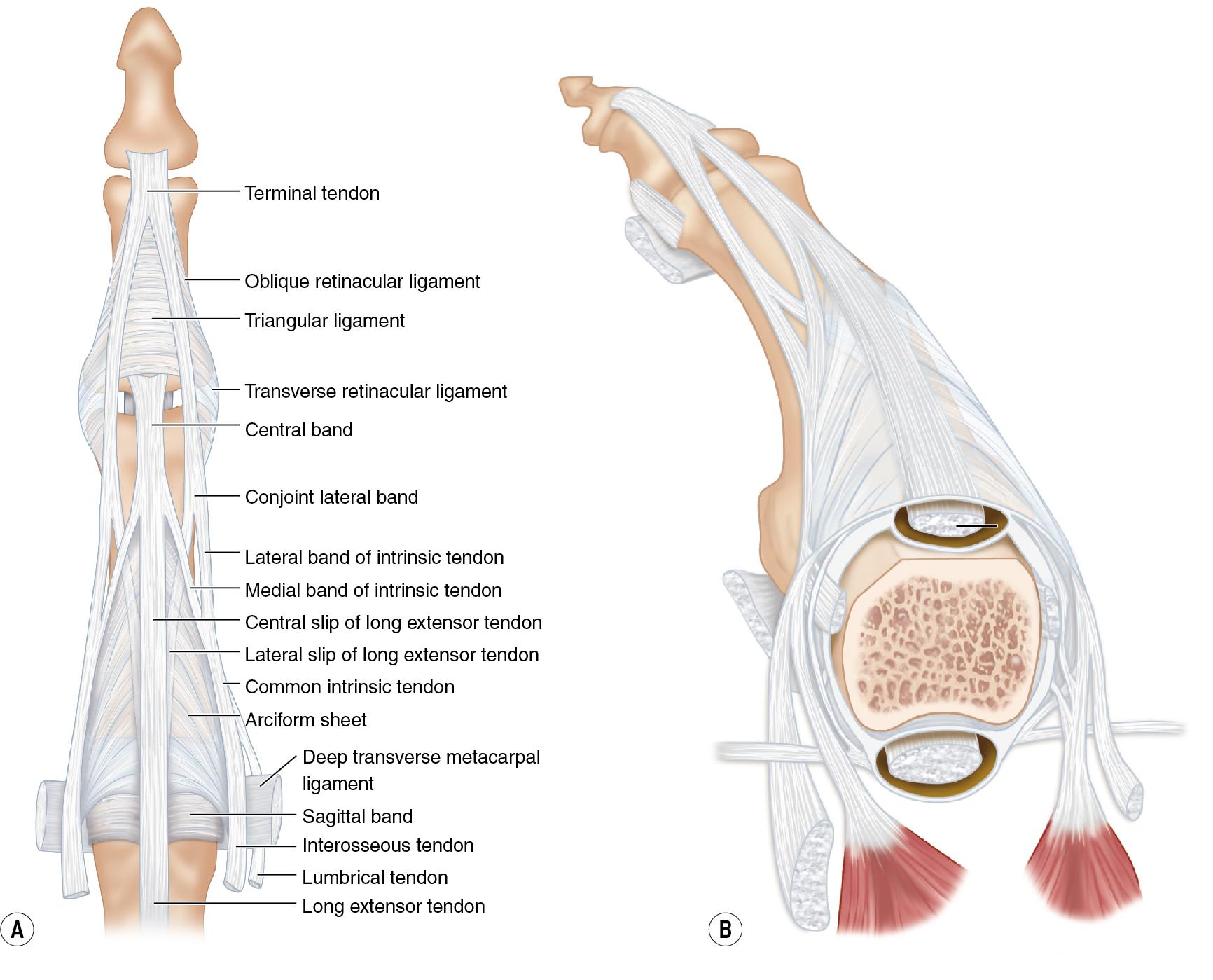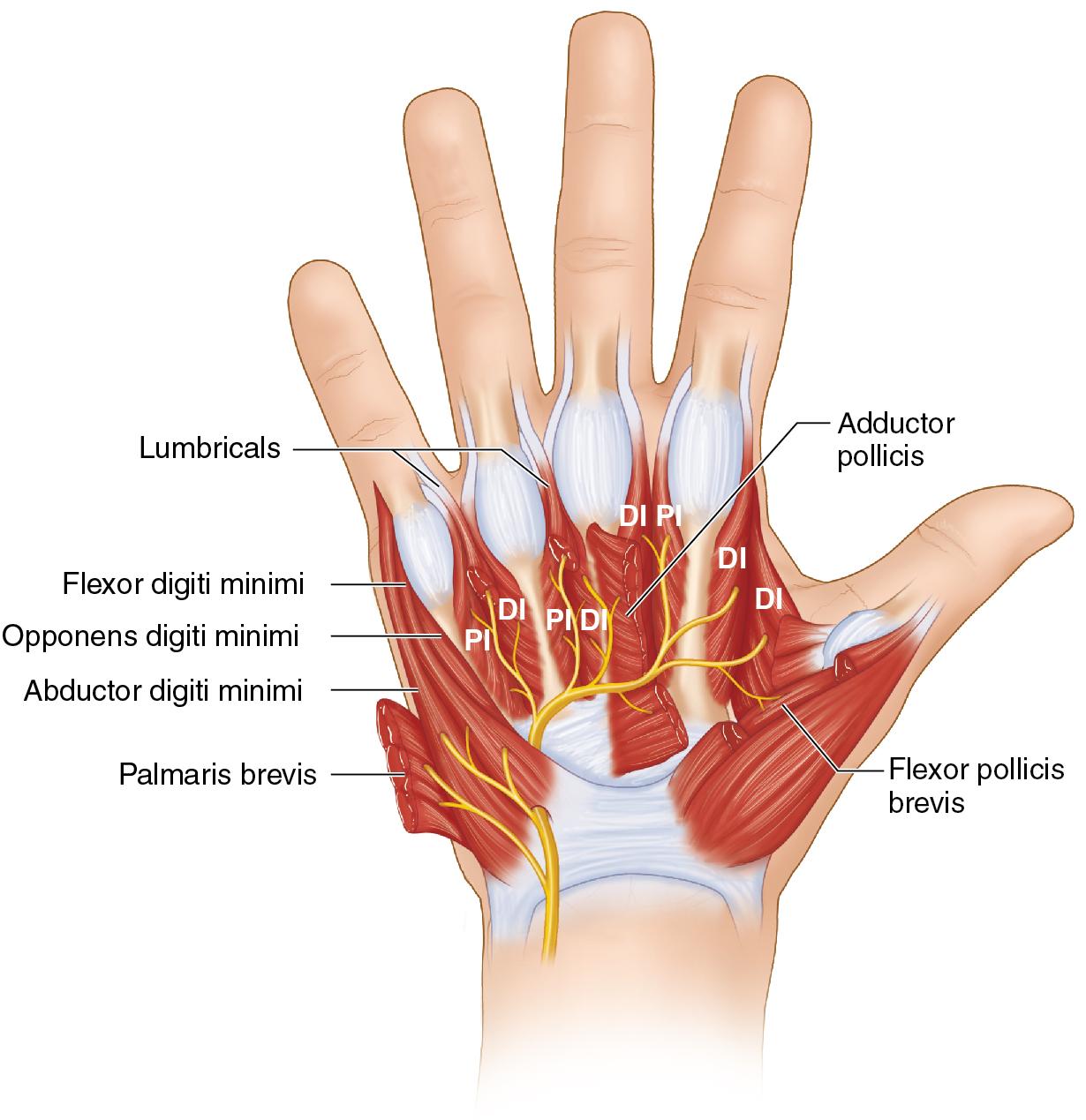Physical Address
304 North Cardinal St.
Dorchester Center, MA 02124
The goal of these procedures is to correct the absence of intrinsic function in the tetraplegic hand and to improve the functional result of extrinsic reconstruction.
Intrinsic reconstruction can enhance grip in patients who have an extensor carpi radialis longus (ECRL) to flexor digitorum profundus (FDP) transfer.
Although the ECRL to FDP transfer restores finger flexion, it brings the fingertips to the base of the fingers rather than the palm, making it difficult for the patient to grasp large objects.
Intrinsic reconstruction can enhance index finger metacarpophalangeal (MCP) joint flexion for effective pinching.
The index finger MCP flexion and additional support from the other MCP flexed fingers are necessary because the thumb must meet the radial aspect of the digit for effective key pinch.
The following procedures are useful for tetraplegic patients in certain situations: intrinsic tenodesis using tendon graft and flexor digitorum superficialis (FDS) lasso procedure.
This procedure is indicated for:
A static reconstruction to correct MCP hyperextension and improve proximal interphalangeal (PIP)/distal interphalangeal (DIP) extension.
Most tetraplegic patients, who have few or no functional muscles for transfer (International Classification for Surgery of the Hand in Tetraplegia [ICSHT] group 2 or less).
Patients who have significant PIP joint flexion deformities associated with central slip deficiency.
A single tendon graft is required to correct all four fingers simultaneously.
This dynamic reconstruction is used to correct MCP hyperextension, leading to enhanced posture for key pinch.
It is indicated for tetraplegic patients with functional finger extension, who have reserved finger extensors (ICSHT group 6 or higher) or successful reconstruction via nerve and tendon transfer.
It provides added benefits for patients with a PIP joint flexion deformity from FDS spasticity.
Even if the FDS tendon is paralyzed, it may be used to enhance passive flexion of the MCP joint when the wrist is in extension.
It is a rather simple approach that can be used for individual fingers.
Patients should have realistic expectations, be motivated to complete postoperative therapy, and have a stable support system.
The roll-up finger occurs because finger flexion begins at the DIP joint, and fingers bend into flexion rather than following a large arc.
Intrinsic and extrinsic reconstruction can take place in the same surgical session to optimize tendon balancing. In this scenario, a wide-awake approach is ideal.
The intrinsic tenodesis has better physiologic restoration than the FDS lasso procedure.
For patients with spinal cord injury, an organized examination is necessary to document the muscle strength of the patient’s upper limb joint flexion/extension and intrinsic hand function. The specific pattern of dysfunction depends on the level of injury.
The available functional muscles are categorized using the ICSHT ( Table 69.2 ).
The passive range of motion (ROM) of each joint, including the shoulder, elbow, wrist, and fingers, is assessed for joint and muscle contracture.
The general appearance is examined because lack of intrinsic muscles can lead to MCP joint hyperextension and IP joint flexion deformities (clawing; Fig. 75.1 ), resulting in inadequate prehensile grasp and insufficient grip/pinch strength.

The examiner passively corrects the MCP joint hyperextension to check if there is full active PIP joint extension.
A positive test indicates that the central slip is intact and can function to extend the PIP joint.
If the PIP extensor mechanism is competent, then the patient only needs correction of MCP joint hyperextension.
The intrinsic muscles balance the extrinsic flexor and extensor muscles, and they provide smooth grasp and release without early digital roll-up movement in the functional hand.
Imaging is unnecessary unless a joint lacks passive ROM. In this case, radiographs are necessary to evaluate arthrosis at the MCP and IP joints.
The seven interosseous muscles ( Fig. 75.2 ) are innervated by the deep branch of the ulnar nerve.
Four dorsal interosseous muscles (bipennate muscles) originate between the metacarpals and abduct the fingers from the axial line. They act with the lumbricals to flex the MCP joints and extend the IP joints.
Three palmar interosseous muscles (unipennate muscles) are located on the palmar portion of the second, fourth, and fifth metacarpals. They adduct the fingers toward the axial line and act with the lumbricals to flex the MCP joints and extend the IP joints.
The lumbricals run between the metacarpals and originate from the FDP. The median nerve innervates the first and second lumbricals. The third and fourth lumbricals are innervated by the deep branch of the ulnar nerve. They flex the fingers at the MCP joints and extend the IP joints (see Fig. 75.2 ).
The interosseous tendons and lumbricals pass palmar to the axis of the MCP joint to form the common intrinsic tendon, which then divides into a medial band that inserts along with the central slip into the dorsal base of the middle phalanx and a lateral band that continues to the dorsal base of the distal phalanx. They couple MCP joint flexion with IP joint extension ( Fig. 75.3A–B ).


Become a Clinical Tree membership for Full access and enjoy Unlimited articles
If you are a member. Log in here